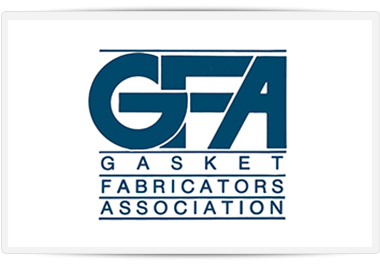If you're looking for die cut orthotics, you don't have a shortage of material options. And when you consider cushions, non-skid elements, padding, and top covers (like gels, foams, and laminates), it can be quite confusing.
However, the experts at Frank Lowe will carefully listen to your needs and guide you to the best solution. Since we've opened our doors over 60 years ago, we've become material selection experts for every industry we serve. Let's take a closer look at some of the base materials that are essential in the design and development of custom die cut orthotics.
Thermoplastic Materials Used in Die Cut Orthotics
In the most simple sense, thermoplastics are a class of materials that harden when cooled and soften when heated. In general, there are two broad categories of thermoplastics: plastic and isoprene rubber. Plastics have a higher degree of stretch and are more conformable; but isoprene has more control because it resists stretching and is less conformable. There are a range of options you'll need to consider when choosing thermoplastics for your die cut orthotics, including:
Die Cut Orthotics Made from Acrylic
As the first man-made material employed in rigid orthotics, acrylic is manufactured from methyl methacrylate polymers. Common brand names include Lucite, Plexiglas, and Acrylite. In either case, acrylic is a clear thermoplastic offering excellent optical clarity, stiffness, and strength. It's important to understand acrylic orthotics may be more prone to cracking due to its rigidity.
Custom Orthotic Blanks from Polypropylene
Polypropylene is a relatively low cost plastic that boasts chemical resistance as well as outstanding aesthetic qualities. With a high stiffness and low specific gravity, polypropylene's combination of high strength and light weight makes it a common choice for manufacturing orthotics that are rigid.
However, any groove or notch on the finished shell can result in the creation of a stress point, which may lead to cracking. Polypropylene is offered as homopolymer and copolymer grades.
Subortheolen® Custom Orthotic Blanks
As a high-density polyethylene, high-molecular weight material, Subortholen is an extremely tough, flexible, wax-like, inert polymer. These unique characteristics ensure a deep draw without thinning and a high melt strength.
Subortheolen can be easily cold formed. For instance, you can hammer Subortheolen while cold, which means you can adjust it after the vacuum and heating process. If you're considering using Subortholen for custom blanks, it's imperative to make weight considerations and thickness considerations. For instance, a 4 mm Subortholen blank may be suitable for an athlete who weighs 135 pounds, but may not offer the same suitability for a 250-pound mechanic who wears a 14.
Composite Carbon Fiber Materials for Die Cut Orthotics
When carbon fibers are combined with acrylic plastic, it creates a rigid sheet material called composite carbon fiber. This material is regularly recognized by trade names including the TL-Series, Graphite, and Carboplast.
In either case, composite carbon fiber materials have proven to be suitable for functional, thin orthotics. They are a bit more difficult to form and work with, requiring faster vacuuming, higher softening temperature, as well as complete accuracy during the "pull" process. Simply put, composite carbon fibers do not re-work easily.
Custom Orthotic Blanks from Cork-n-Rubber
As one of Frank Lowe's most popular, do-all materials, cork can also be used for die cut orthotics. In most instances, the cork will be combined with different rubber binders to form a remarkable thermoformable sheet.
Our thermocork-n-rubber is available in a range of thicknesses and weights. The team at Frank Lowe will guide you to the most suitable cork-n-rubber to create a forgiving, but firm orthotic blank.
Custom, Die Cut Orthotic Blanks with Polyethylene Foams
Polyethylene foams are an extremely broad category of materials that are used across an array of industries. Common trade names for cross-linked polyethylene include Dermaplast, Pelite, Plastazote, Nickelplast, Aliplast, and XPE.
These highly-versatile closed-cell foams are ideal for pressure-reducing, total-contact applications. However, orthotic blanks made from polyethylene foams can suffer compression after continued use.
Die Cut, Custom Leather Blanks
Leather was originally used as the go-to material for creating arch supports. Shoemakers would take sole leather and simply wet mold it to casts. These arch supports would have relatively low heel cups and high medial flanges to provide support to the mid foot. Even today, leather laminates are utilized when consumers desire excellent support but are not able to use plastics that are firmer. At Frank Lowe, we regularly die cut orthotics from leather materials.
Contact Frank Lowe for Die Cut Orthotics
When it comes to creating die cut orthotics, there are no one-size-fits-all solutions. Instead, the best die cut orthotics will be customized by expert materials selection to demonstrate the types of properties most valuable. And the team at Frank Lowe will listen to your needs, goals, and parameters to guide you to the best solution.
Contact Frank Lowe today.
Some of the most common materials we use to die cut custom orthotics and blanks include:






